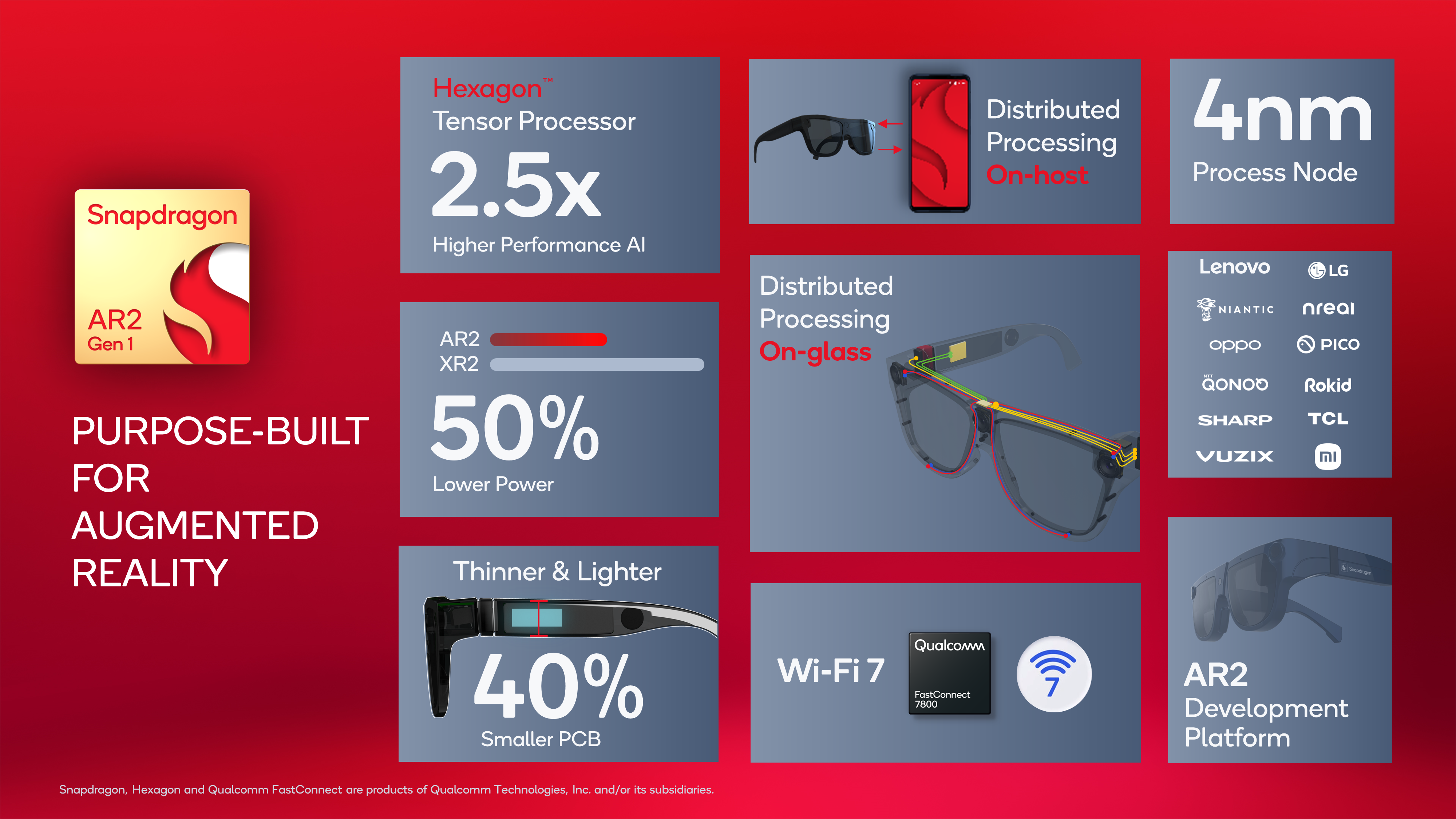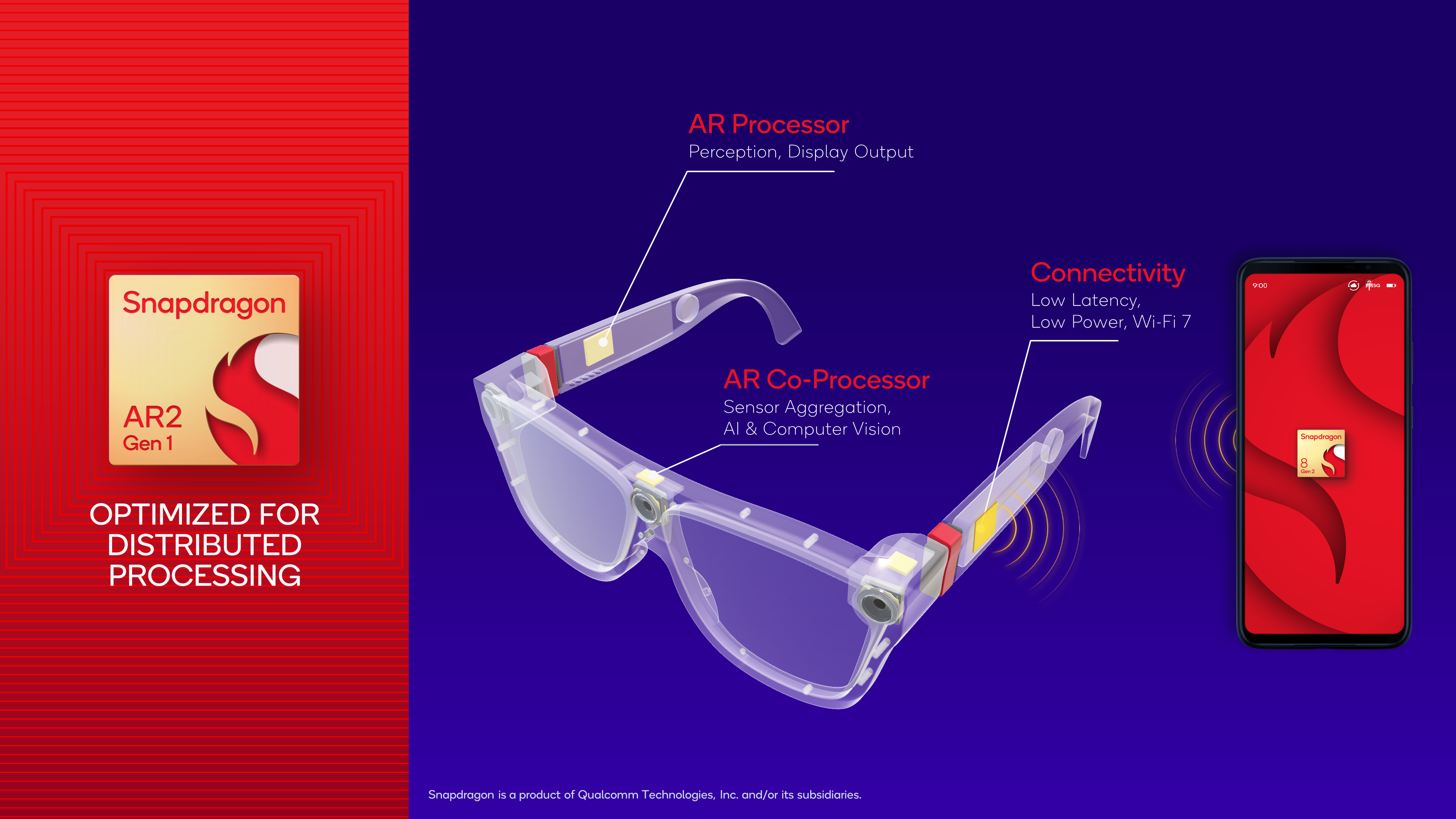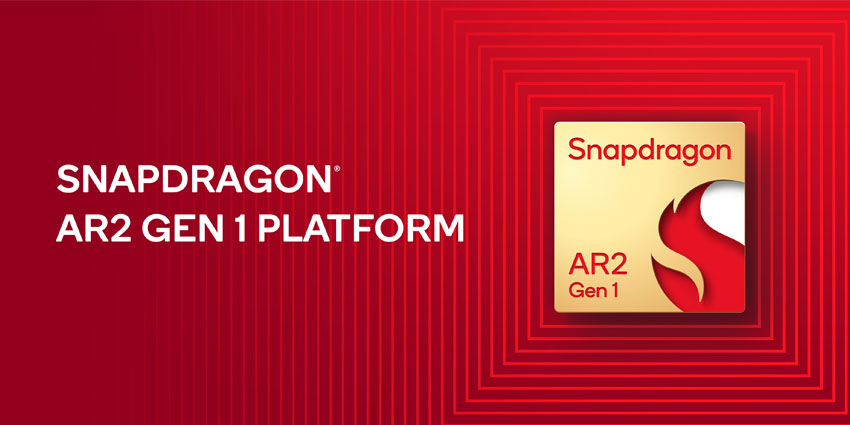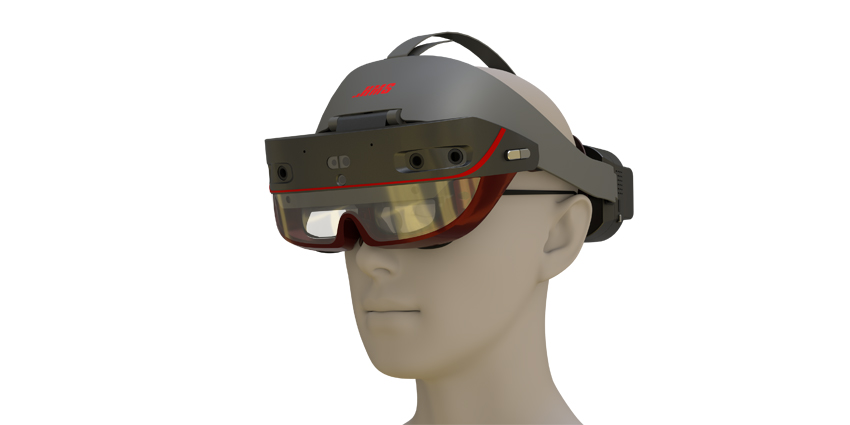Qualcomm Technologies, the world’s premier provider of mobile communications equipment and components, debuted its groundbreaking augmented reality (AR) platform for smart glass devices on Wednesday, the Qualcomm Snapdragon AR2 Gen 1.
The San Diego, California-based enterprise’s latest solution aims to provide smart glass manufacturers with a class-leading, micro form factor series of interlinked components.
The new design will allow AR firms to develop products with greater processing power, cooler operating temperatures, and enhanced software integrations compared to rivals.
Another World First for Qualcomm
In a press briefing attended by XR Today, Hugo Swart, Qualcomm’s Vice President and General Manager of XR and Metaverse, explained how the new system would reshape the AR industry.
Swart explained how current challenges, including battery life, form factor, field of view (FoV), use cases, frames per second, and many other factors limited progress of AR-powered headsets, triggering the company’s need to develop a dedicated AR platform.
Qualcomm has been investing in the XR space for over a decade, namely with its Snapdragon XR1 and XR2 platforms. Tech companies across the industry have widely adopted the XR2 for their immersive devices, including market leaders such as Lenovo’s ThinkReality VRX and A3 devices, Meta’s Quest series, as well as HTC VIVE and Pico Interactive product lineups.
“We were the first to have a standalone VR device that then spurred the rest of the industry to [create their own],” Amon said at the briefing.
Distributed Processing
Qualcomm’s latest innovation distributes processing across the device rather than on a single component, leading to dramatically reduced thermals, greater flexibility in AR smart glass designs, and greater standalone functionality, among other benefits.
The first generation of the platform will work seamlessly with Snapdragon 8 Gen 1 or higher smartphones via tethering for host processing. Smart glasses on the platform will operate with a primary processor, co-processor, and connectivity chip to distribute computing capabilities.

Main AR processing units for display and perception output can easily fit on the arms of smart glasses, with co-processors designed for sensor aggregation, artificial intelligence (AI), and computer vision computation fitting on the nose bridge of devices, the Qualcomm exec explained.
AR processors will feature 4-nanometre architecture with a central processing unit (CPU), a Hexagon Tensor processor for hand and eye tracking and image processing, an engine for visual analytics, Adreno display, Spectra ISP, and other components.
Connectivity modules will provide the world’s first WiFi 7 with latency under 2 milliseconds, 40 per cent less power consumption, and 5.8 Gbps of peak speed. The module will also support high-band simultaneous multi-link support along with the platform’s FastConnect XR software suite 2.0.
Co-processor technologies will include an embedded AI accelerator and CV engine for eye tracking, sensor and camera aggregation, and processor security component as well as other features. The new AI unit is set to deliver over 2.5 times the performance compared to previous Qualcomm engines.

Savings across the (Circuit) Board
Both main and co-processors will offer developers a 40 percent smaller printed circuit board (PCB) and nearly half (45 percent) reduction in wires for a streamlined, cooler system with 50 percent less power consumption than legacy devices.
The AR2 platform will also support Snapdragon Spaces, where developers can leverage Qualcomm’s immersive technologies with a core developer kit to build bespoke solutions.
Numerous firms such as T-Mobile, Square Enix, Samsung, Meta Platforms, Lenovo, Magic Leap, and many others have tapped the new platform for their XR devices while promoting startup accelerators to debut new solutions, greatly expand use cases for the new technology..
Amon Comments on Hand and Eye Tracking Tools
Speaking to XR Today, Qualcomm explained that its new AR platform had the capabilities to block unwanted hand and eye tracking from malicious actors as well as third-party spyware when needed.
According to Qualcomm’s website, such tools are available via Qualcomm’s Mobile Processing Security solution, which allows administrators and device users to monitor, block, and track cyber breaches with secure boot, cryptographic accelerators, trusted execution environments, and key provisioning security.
The AR2 includes a security module in the CPU for on-demand, low-latency protection from hackers, unwanted or untrusted software, and other malicious actors. Conversely, the AR co-processor will compute the AI-based functions of tracking, object recognition, and other functions.
He said in his statement,
“We have a very strong security that blocks [suspicious software] and offers proper protection. This is something that ends up at the application or device level, and we have the tools to protect [them]”
ISV Integrations
Speaking further on integrating hand and eye-tracking solutions from independent service providers (ISVs) such as Tobii, CORTEXR, and NeuroSync, Amon told XR Today that the AR2 platform would accommodate such immersive software tools.
Speaking further, he explained,
“These are new things that people are developing and exploring, and we enable ISVs to port their solutions to our digital signal processing (DSP) and some intellectual property (IP) blocks we have”
He explained further that for eye-tracking, his company worked closely with Tobii for its solutions over the last few years. Additional ISVs such as CORTEXR allow advertisers to analyse attention and gaze for determining shopper behaviours. NeuroSync works closely with sports, military, and educational tools to diagnose brain injuries, learn attention and gaze, and produce rehabilitation programmes.
AR Smart Viewer Design
The news comes just months after it unveiled its Wireless AR Smart Viewer Reference Design in May, which operates on its Snapdragon XR2 Platform with tetherless original equipment manufacturer (OEM) and original device manufacturer (ODM) support.
The recent design allowed smart glass manufacturers to reduce their product form factors with a 40 percent thinner profile compared to rival firms, using China tech firm SeeYa’s micro-OLED displays.
XR Today understands the incremental solution for XR platforms has remained a critical step in the production of its latest AR2 platform, allowing the firm to reach its hardware milestone.
Speaking on the benefits of the industrial metaverse, one of the fastest-growing applications for the device, Amon stated in a report in February that the Metaverse will remain a huge platform for developing new hardware solutions and “a number of different opportunities.”
“You’re always going to have the big social network, consumer play. You’re going to have a big one for gaming, but industrial is big,” Amon explained at the time.







